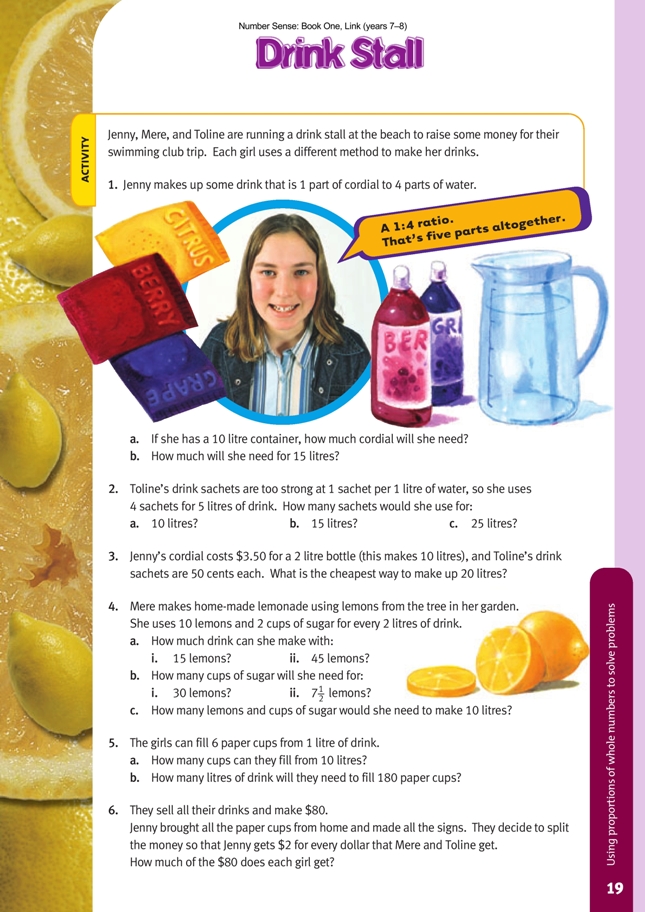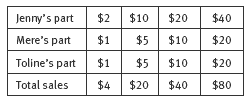This is a level 5 number activity from the Figure It Out series. It relates to Stage 8 of the Number Framework.
A PDF of the student activity is included.
Click on the image to enlarge it. Click again to close. Download PDF (602 KB)
solve ratio problems using multiplication and division
In this activity, the students are introduced to the concepts of ratio and proportion and how these are used to solve problems.
Explore Jenny’s statement with the students to ensure that they know how the parts (ratio) are used to make up the whole. They need to see that when the cordial and water are mixed in a ratio of 1:4, the fraction of the whole that the cordial makes up is 1/5 and the fraction of the whole that the water makes up is 4/5.
Highlight the use of the ratio symbol (:) that means “to” in 1:4, which is thus read as “one to four”.
Introduce the students to the use of a ratio table for considering the relationship between cordial amounts and the total drink produced in questions 1a and b.
The students could then take this idea and use it to show what each question is about before they solve it. For example, in question 2, Toline’s ratio table would look like this:
You can use this table to discuss the connections between the different elements. Toline’s table shows sachets in groups of 4 and drinks in groups of 5. It also shows how 4 sachets relate to 5 drinks in the same proportion as 8 sachets to 10 drinks.
Question 4 has an interesting connection between questions a and b that you could share with the students. That is, the number of litres of drink made with 15 lemons is the same as the number of cups of sugar used with 15 lemons. Discuss why this must always be true.
Question 6 is similar to question 4 in that it extends the ratio idea by involving three parts that combine to make the whole. Suggest to the students that they discuss what is happening in the problem to work out the ratios involved.
For question 6, the girls’ shares, Jenny:Mere:Toline, are shared in the ratio 2:1:1. This is said as “two to one to one”. So Jenny gets 2 out of every 4 parts, while the others get 1 out of every 4 parts.
The ratio table would look like this:
Answers to Activity
1. a. 2 L
b. 3 L
2. a. 8 sachets. (A 4:5 ratio means 8 sachets for 10 litres.)
b. 12 sachets. (15 litres is 3 times 5 litres, so she needs three times as much water.
3 x 5 = 15 litres, 3 x 4 = 12 sachets)
c. 20 sachets. (5 x 5 = 25 litres, 5 x 4 = 20 sachets)
3. Cordial. (Jenny would spend $7.00, and Toline would spend $8.00.)
4. a. i. 3 L
ii. 9 L
b. i. 6 cups of sugar
ii. 1 1/2 cups of sugar
c. 50 lemons and 10 cups of sugar
5. a. 60 cups
b. 30 L
6. Jenny gets $40.00, and Mere and Toline get $20.00 each.



